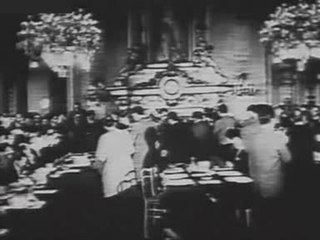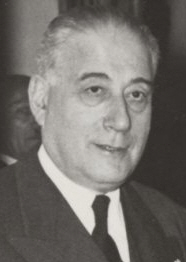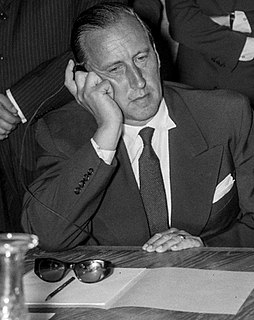
The European Coal and Steel Community (ECSC) was an organisation of six European countries created after World War II to regulate their industrial production under a centralised authority. It was formally established in 1951 by the Treaty of Paris, signed by Belgium, France, Italy, Luxembourg, the Netherlands, and West Germany. The ECSC was the first international organisation to be based on the principles of supranationalism, and started the process of formal integration which ultimately led to the European Union.

The European Economic Community (EEC) was a regional organisation that aimed to bring about economic integration among its member states. It was created by the Treaty of Rome of 1957. Upon the formation of the European Union (EU) in 1993, the EEC was incorporated and renamed the European Community (EC). In 2009, the EC's institutions were absorbed into the EU's wider framework and the community ceased to exist.

The Treaty of Rome, officially the Treaty establishing the European Economic Community brought about the creation of the European Economic Community (EEC), the best-known of the European Communities (EC). It was signed on 25 March 1957 by Belgium, France, Italy, Luxembourg, the Netherlands and West Germany and came into force on 1 January 1958. Under the name Treaty on the Functioning of the European Union, it remains one of the two most important treaties in the modern-day European Union (EU).

The European Communities (EC), sometimes referred to as the European Community, were three international organizations that were governed by the same set of institutions. These were the European Coal and Steel Community (ECSC), the European Atomic Energy Community, and the European Economic Community (EEC); the last of which was renamed the European Community (EC) in 1993 by the Maastricht Treaty, which formed the European Union.

The Schuman Declaration is a statement made by French foreign minister Robert Schuman on 9 May 1950. It proposed to place French and West German production of coal and steel under one common High Authority. This organization would be open to participation of other Western European countries. This cooperation was to be designed in such a way as to create common interests between European countries which would lead to gradual political integration, a condition for the pacification of relations between them: "Europe will not be made all at once, or according to a single plan. It will be built through concrete achievements which first create a de facto solidarity. The coming together of the nations of Europe requires the elimination of the age-old opposition of France and [West] Germany".

Piero Malvestiti was an Italian politician who was a minister in successive governments in the 1940s and 1950s, a European Commissioner and President of the High Authority of the European Coal and Steel Community.

The Directorate-General for Economic and Financial Affairs is a Directorate-General of the European Commission. The DG ECFIN is located in Brussels, Belgium, and Luxembourg. Its main responsibility is to encourage the development of Economic and Monetary Union both inside and outside the European Union, by advancing economic policy coordination, conducting economic surveillance and providing policy assessment and advice.

The Monnet Authority was the first High Authority of the European Coal and Steel Community (ECSC), between 1952 and 1955. Its president was Jean Monnet of France.

The Mayer Authority was the second High Authority of the European Coal and Steel Community (ECSC), between 1955 and 1958. Its president was René Mayer of France.

The Finet Authority was the third High Authority of the European Coal and Steel Community (ECSC), between 1958 and 1959. Its president was Paul Finet of Belgium.

The Del Bo Authority was the last High Authority of the European Coal and Steel Community (ECSC), between 1963 and 1967. Its president was Rinaldo Del Bo of Italy. Del Bo was briefly followed by Albert Coppé's interim Authority.
The Coppé Authority was an interim High Authority of the European Coal and Steel Community (ECSC), between 1 March and 5 July 1967. Its president was Albert Coppé of Belgium. The Authority was subsequently combined by the Merger Treaty (1967) with the Commissions of the European Atomic Energy Community and the European Economic Community to become the Commission of the European Communities.

The period saw the first moves towards European unity as the first bodies began to be established in the aftermath of the Second World War. In 1951 the first community, the European Coal and Steel Community was established and moves on new communities quickly began. Early attempts at military and political unity failed, eventually leading to the Treaties of Rome in 1957.

The Messina Conference of 1955 was a meeting of the six member states of the European Coal and Steel Community (ECSC). The conference assessed the progress of the ECSC and, deciding that it was working well, proposed further European integration. This initiative led to the creation in 1957 of the European Economic Community and Euratom.

The Benelux memorandum of 1955 was a document drafted by the three Benelux countries on 18 May 1955 as a means to reviving European integration on the basis of a general common market.

Dirk Pieter Spierenburg was a Dutch politician and diplomat. He was born on 4 February 1909 in Rotterdam (Netherlands and died on 27 August 2001. He was a member of the High Authority of the European Coal and Steel Community, serving in the Monnet Authority from 1952 and was in charge of external relations. He later wrote the Spierenburg report on reform in 1979 of the European Commission which was only partly heeded.

The High Authority was the executive branch of the former European Coal and Steel Community (ECSC). It was created in 1951 and disbanded in 1967 when it was merged into the European Commission.
The United States Mission to the European Union (USEU) is the diplomatic mission of the United States to the European Union; it is based in Brussels, Belgium. The US has maintained diplomatic relations with the EU and its predecessors since 1953. The first predecessor of the current mission was the US diplomatic mission to the European Coal and Steel Community in Luxembourg, which opened in 1956. In 1961, the US Mission to the European Communities was established in Brussels, which later became the United States Mission to the European Union, upon the latter's establishment in 1993.

Léon Daum was a French mining engineer, company director and senior European administrator. He was a member of the High Authority of the European Coal and Steel Community from 1952 to 1959.










